Fang’s puffer - Tetraodon cochinchinensis
Scientific name: Tetraodon cochinchinensis
Common name: Fang’s puffer
Family: Tetraodontidae
Usual size in fish tanks: 6 - 7 cm (2.36 - 2.76 inch)
014
Recommended pH range: 6.6 - 7.5
Recommended water hardness: 5 - 20°N (89.29 - 357.14ppm)
0°C 32°F30°C 86°F
Recommended temperature range: 23 - 28 °C (73.4 - 82.4°F)
The way how these fish reproduce: Spawning
Where the species comes from: South Asia
Temperament to its own species: aggressive/territorial
Temperament toward other fish species: aggressive/territorial
Usual place in the tank: Bottom levels
Food and Feeding
Fang’s puffers thrive on a diet rich in live or frozen meaty foods. Ideal options include cockles, mussels, and prawns. These provide essential nutrients while satisfying their carnivorous nature. It is important to offer them a consistent supply of snails, as the hard shells play a crucial role in maintaining their beaks, which grow continuously. Without this, their beaks can become overgrown, making it difficult for them to eat properly. Regularly varying their diet ensures they receive all the nutrients they need for long-term health.
Origin
Fang’s puffers are native to Southeast Asia, where they can be found in freshwater habitats in countries such as Thailand and Vietnam. These regions provide the warm, slow-moving waters that puffers prefer, with dense vegetation that helps them hide and hunt.
Sexing
Distinguishing between male and female Fang’s puffers can be difficult, as there are no outward physical differences. Sexing is only possible with careful observation of breeding behavior, which is not often witnessed in home aquariums.
Breeding
Although breeding Fang’s puffers in home aquariums is possible, it is largely a matter of luck rather than controlled efforts. In the rare cases when breeding does occur, the adults provide no parental care. The eggs and fry are highly vulnerable and should be moved to a separate tank to prevent predation by the adults or other fish. Successfully raising fry requires a well-maintained environment with optimal water conditions and a proper diet of small, live foods to encourage healthy growth.
Lifespan
The typical lifespan of a Fang’s puffer (Tetraodon cochinchinensis) in captivity is around 10 years. Providing the fish with a proper diet, clean water, and suitable tank conditions can help them reach or even exceed this lifespan.
Short Description
Fang’s puffer is a highly territorial and aggressive species, especially towards other tank mates. Because of this, it is best to keep them in a species-only aquarium. If you plan to house more than one Fang’s puffer, make sure to include plenty of plants, rocks, and other décor to create natural barriers, allowing each fish to establish its own territory. This can help reduce conflict between individuals. Additionally, Fang’s puffers produce a significant amount of waste due to their protein-heavy diet. To maintain water quality, it is essential to use a powerful filtration system and monitor the tank conditions regularly to avoid spikes in ammonia or nitrites, which could harm the fish.




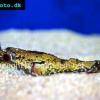 Red
Red 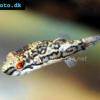 Striped
Striped  Malabar
Malabar 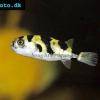 Amazon
Amazon 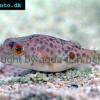 Red-spot
Red-spot 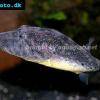 Bailey’s
Bailey’s 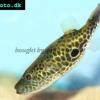 Thai
Thai 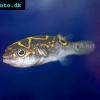 Figure
Figure  Green
Green  Coral
Coral 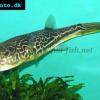 Giant
Giant 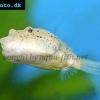 Congo
Congo 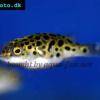 Green
Green 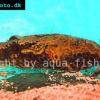 Humpback
Humpback 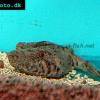 Mekong
Mekong 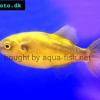 Bronze
Bronze